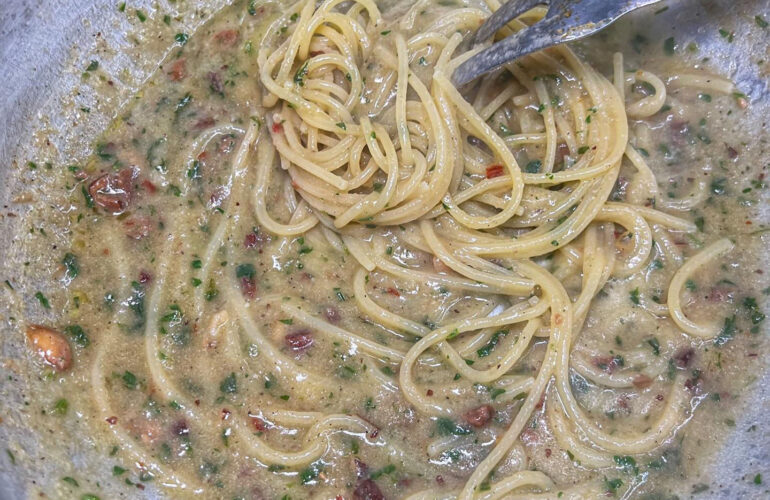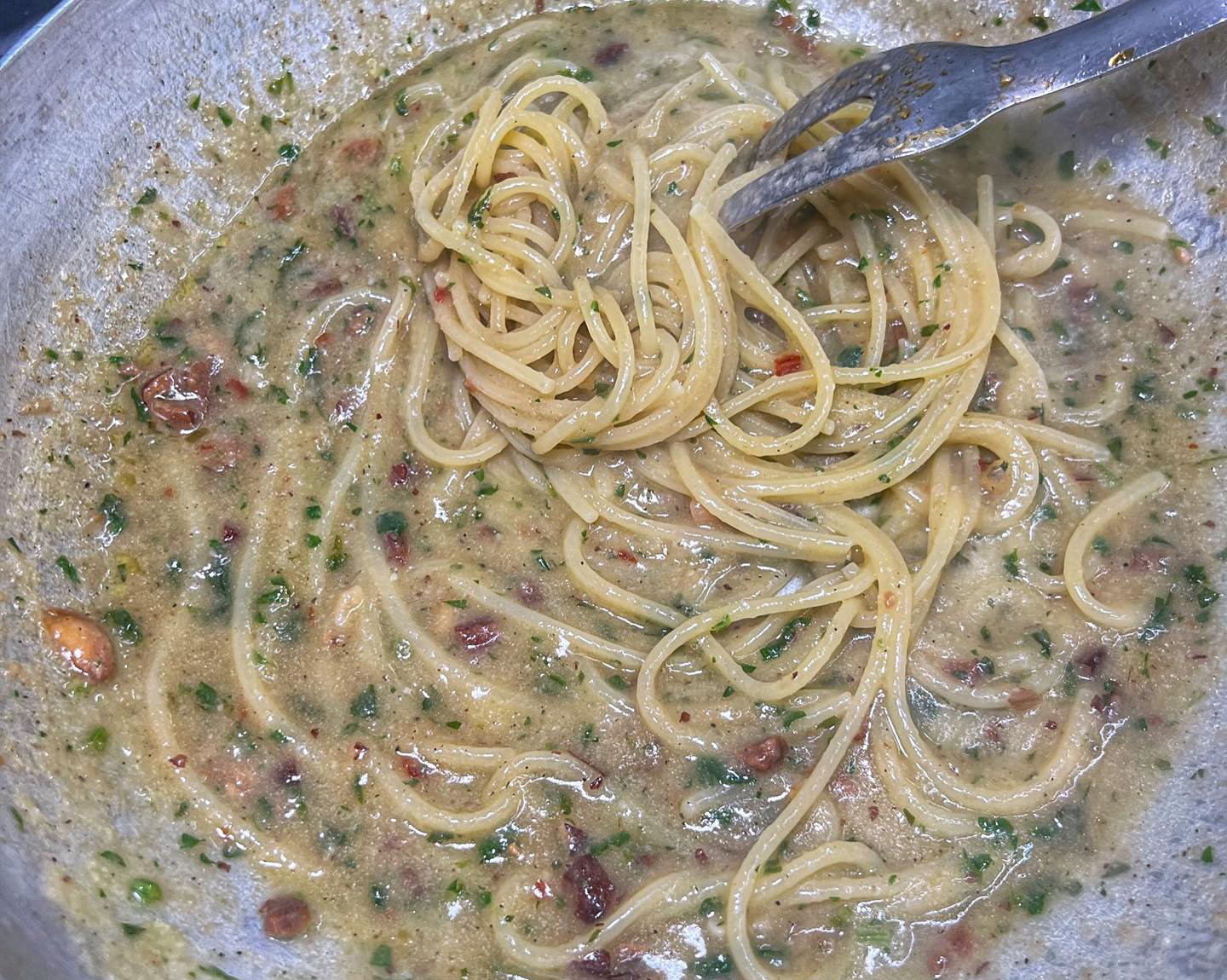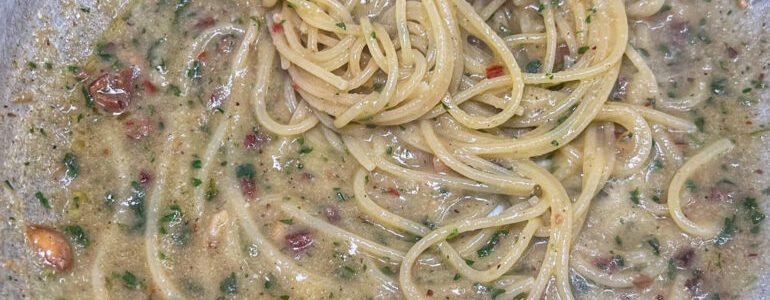
Spaghetti with garlic, oil and chilli pepper with taralli and Procida-style lemon they are a last minute dish that will win you over. Obviously there are two underlying reasons for this preparation Neapolitan cult ingredients. The first is the suet and pepper taralli, which with a bit of luck you can now find everywhere. The latter are the island’s lemons, which the people of Procida call bread and they are very good. Those are more difficult to find, and if you don’t have this possibility you can’t do anything else replace them with other lemons. The important thing is that they are zero kilometer and untreated.
Spaghetti alla procidana
Ingredients x 4
- durum wheat flour spaghetti 360 g
- Neapolitan taralli 2
- untreated lemons 2
- dried chili pepper 1
- garlic 1 clove
- extra virgin olive oil
- fresh mint
- salt
Preparation
The first thing to do to prepare spaghetti with garlic, oil and chilli pepper with tarallo and lemon Procida style is to fillet the lemon zest with a paring knife. If you don’t have it available, grate it. The important is avoid the white part, with a more bitter taste. Crumble coarsely the two taralli suet and pepper. Remove the seeds from the chilli pepper and break it into pieces with your hands. Put the salted water for the pasta on the heat and wait for it to boil. Meanwhile, heat a drizzle of extra virgin olive oil in a pan and cook brown lightly the garlic.
Add the spaghetti and then drain them al dente, keeping aside a little cooking water. Transfer them immediately to the pan with the garlic, add the lemon zest and chilli pepper, pour in a little cooking water and sauté everything. Turn off the heat and stir with the taralli, suet and pepper and the washed and chopped mint leaves. Your spaghetti with garlic, oil and chilli pepper with tarallo and lemon Procida style they are ready. Enjoy your meal.
Read also: Spaghetti in Aeolian sauce, the recipe with ancient Sicilian flavors that is made with two ingredients in 5 minutes

navigate_before
navigate_next


